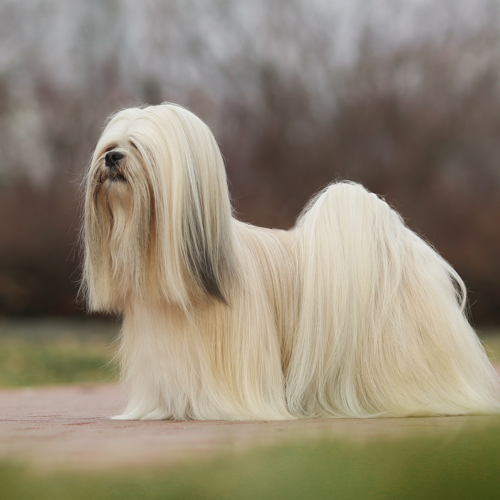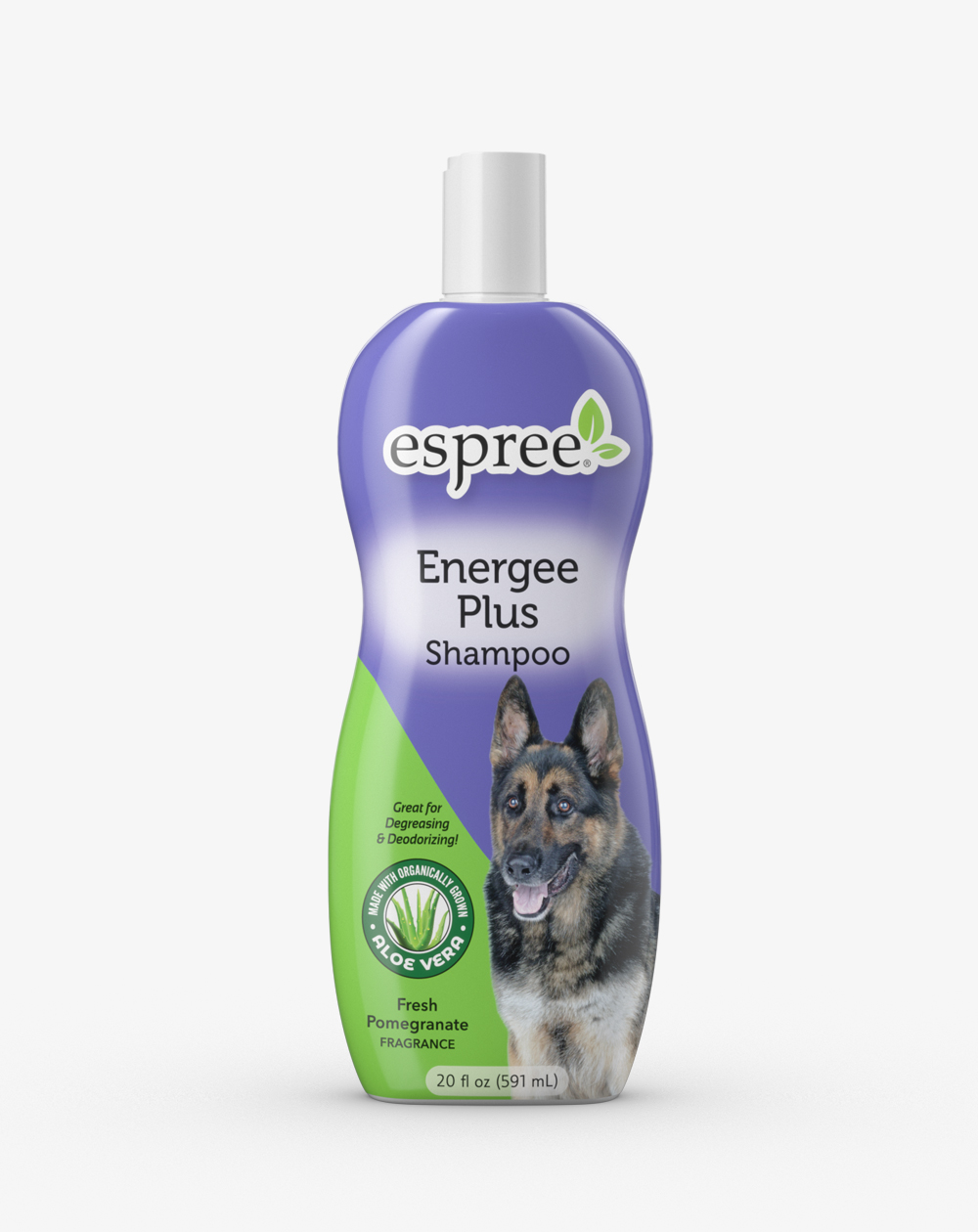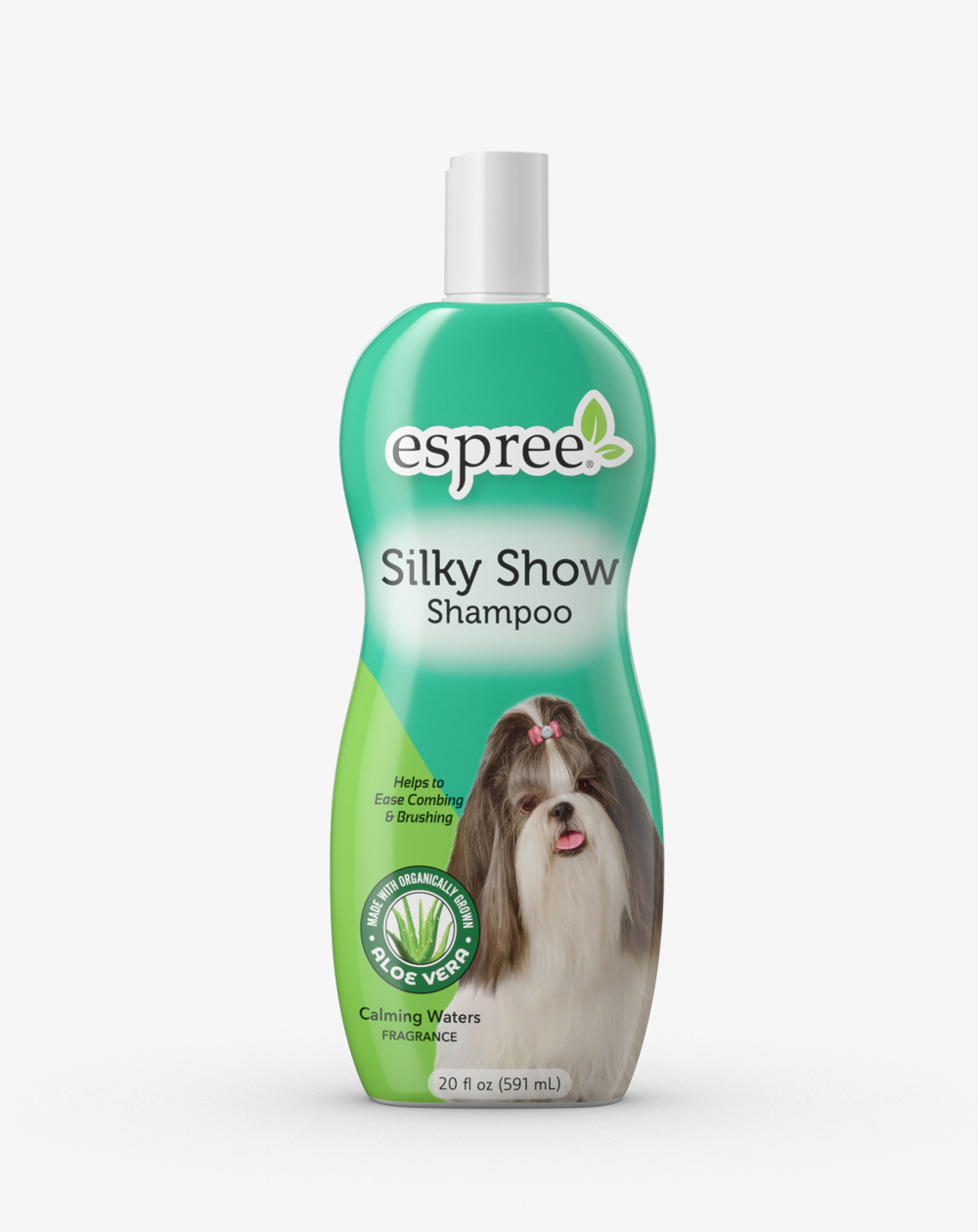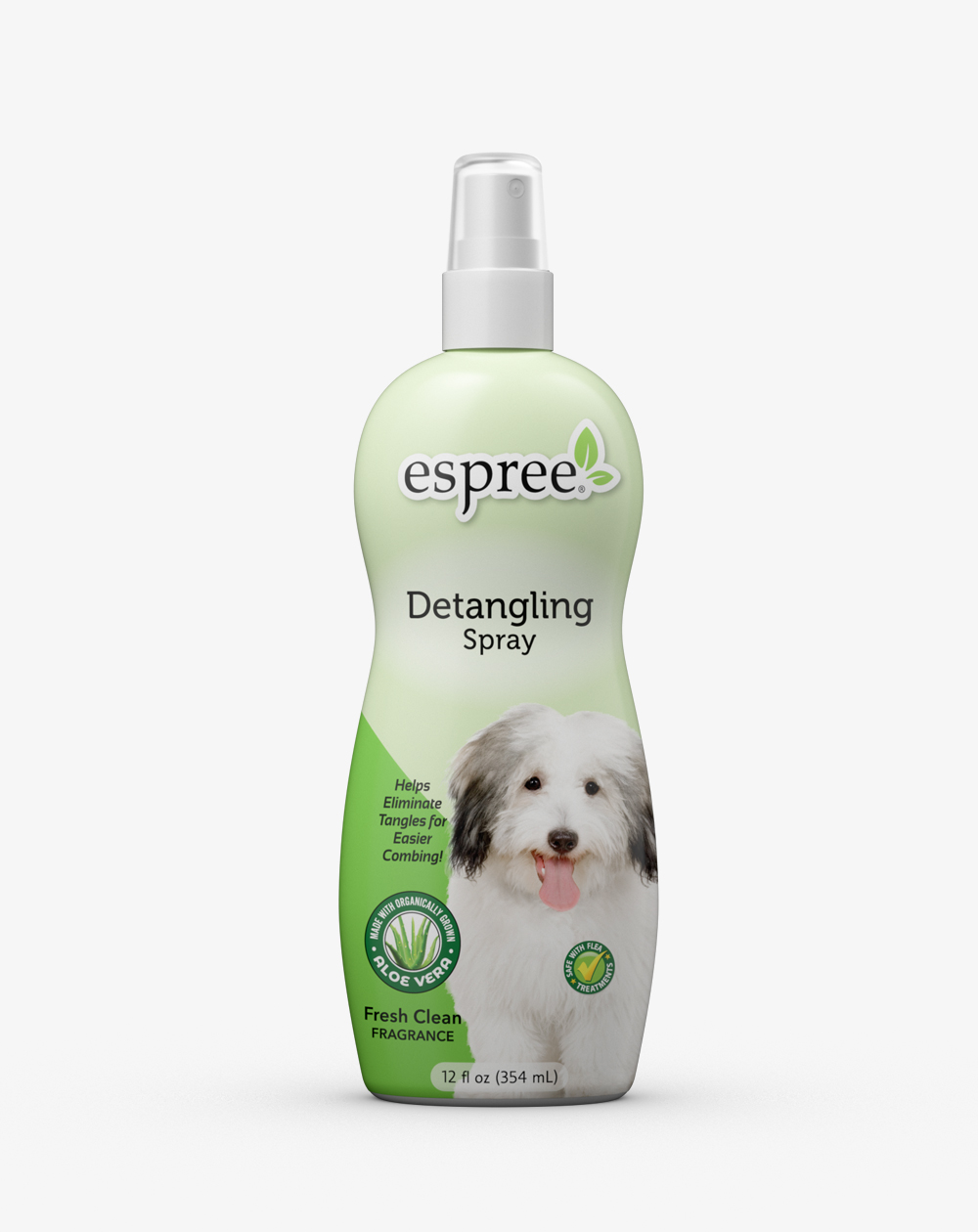
Lhasa Apso
The Lhasa Apso is a small, hardy breed with a beautiful cloak of hair that parts down their back from head to tail. Their temperament is unique: joyful and mischievous, dignified and aloof. An independent breed, the Lhasa’s goal in life is not necessarily to please their master. Popular in the show ring, the breed also excels in activities that provide constant challenges, such as agility. This breed comes in a variety of colors ranging from light blonde to black. Black tipping on ears and the face are also very common.
Breed Profile
Bred as indoor watchdogs for hundreds of years, Lhasa’s can be suspicious of strangers, so early socialization is critical. They thrive living with adults or families with older children and enjoy regular walks. A long-coated breed, they also require frequent grooming. Many pet owners enjoy keeping their Lhasa in a shorter “puppy” or modern trim.
Grooming
The Lhasa Apso does require frequent bathing and grooming. This mischievous Tibetan breed can be bathed and groomed as frequently as once a week up to every 6 weeks depending on the activity level of the dog and the length of coat. The Lhasa Apso’s coat is thick and dense, therefore is does mat and tangle easily. It is essential to select the proper products to match the pet’s needs in order to allow the Lhasa Apso to have an enjoyable grooming experience and maintain healthy skin and coat.
There is an art to bathing the Lhasa Apso in order to minimize further tangling during the bath process. After the coat is wet, apply the shampoo by squeezing it through the coat in a downward motion. This can also be achieved using a rubber curry with cylinder type teeth to help penetrate down to skin and thoroughly clean the entire coat. The same technique is used when conditioning the coat. Make sure you thoroughly rinse the coat. It is a good idea to slightly cool the water temperature down for the final rinse to ensure the coat is completely free of any product. Once the bath is finished, blot the coat with a towel and squeeze excessive water from the ears, legs, and tail. Always use a downward motion to remove the excess rather than a circular motion in order to keep the coat from further tangling.
Finally, it’s time to dry the Lhasa. If the dog is in full coat, it is best to lay the dog on its side and dry in layers or line dry the coat. Be sure to completely dry the area you are working on before moving onto the next area. Pay particular attention to the insides of the legs and behind the ears.
Finishing the Dog: Tools and Finish Grooming
The coat should be mat and tangle free. The coat hangs straight and is light and airy. The Lhasa Apso is parted from head to tail. Stand the dog on the table then stand directly behind him to set the basic part. Use a parting comb or the end of a metal comb to set the part. Begin at the base of the neck and run the comb straight down the spine allowing the hair to fall on either side. Then part the head so it meets the part at the base of the neck. Once the basic part is set make sure it is straight down the spine and make any necessary adjustments a few hairs at a time. Then spray the part with a hydrating conditioner and gently pat the coat. This sets the part and helps the hair fall back into place once the dog “shakes” after grooming. The Lhasa Apso also has an eyefall too. It is important to pull the eyefall back using barrettes or even braiding the hair. The grooming on the Lhasa Apso is neither inefficient, overdone, nor overexaggerated.
If you are unable to keep up with the long, flowing coat with weekly bathing and brushing, by all means choose to have your Lhasa Apso groomed into a shorter trim. A sporting or modern trim still needs routine maintenance with bath and brush outs every 2 to 3 weeks.
General Health Care
Prep work is the foundation of all grooming. Prep work includes ear cleaning, nail trimming, trimming the pads, and proper dental hygiene. Master these skills sets the professional pet stylist apart from the rest. Prep work should be done before every bathing and grooming appointment. All dogs need to have their ears checked and cleaned on a regular basis. Some need to have the hair plucked from the ear canal. This allows the ear to have proper air circulation. It is not necessary to remove all of the hair in the ear, as some serves as a barrier to foreign debris. It is imperative that you are properly trained to pull ear hair before attempting this endeavor. Proper nail care is also very important. Long, unsightly nails are uncomfortable for the dog, as well as anyone they might jump on. Long nails also compromise the shape of the foot. Trimming the pads of the foot helps give the dog good traction on different surfaces and can minimize the amount of dirt the dog tracks into the house. It also affords the opportunity to treat and condition the paws from cracks and abrasions. Good dental hygiene is essential for a healthy pet as well.
Nutritional Care
In order to maintain healthy skin and coat as well as overall health, it is important to provide good nutrition to your dog through a well-balanced diet, vitamins, and healthy treats.
Do they require a lot of grooming?
Lhasa Apso’s do require routine grooming. As a young dog, it is imperative that you get the dog used to regular grooming. A full brush out 2 to 3 times a week is best with baths every 1 to 2 weeks. Never brush a dry coat, always lightly mist with a hydrating spray. If the Lhasa Apso is kept in a shorter trim, weekly brush outs are still preferred. Routine baths ranging between 1 to 4 weeks is desirable. Never wait until your Lhasa Apso is matted to groom your dog. This is a breed that requires their caring owner to stay on top of routine maintenance.
What is a common problem in a Lhasa Apso?
Owners of a Lhasa Apso should be aware of several eye conditions to which the breed is prone to developing. Some of these eye conditions are hereditary and some are more environmental. Progressive Retinal Atrophy, in which the retina is subjected to deterioration is a hereditary disease. Other common eye issues in Lhasa’s are the development of a cherry eye and the development of dry eye. Cherry eye is where the tear duct erupts to the surface of the eye. Dry eye is a condition where the tears are under produced and the eye becomes painfully itchy, dry, and swollen. Both of these eye conditions require treatment from your licensed veterinarian.
Does the Lhasa Apso shed or cause allergies?
Lhasa Apso’s do not shed much. Less shedding equates with less dander in the environment. One key to keeping dander levels low is frequent bathing and brush outs. However, before bringing a Lhasa Apso into your home if you have allergies, you should spend some time around this breed to make sure you do not have a reaction.
Are Lhasa Apso’s good with children?
A Lhasa Apso is typically not the best dog for families who have small children. They are very loyal to their adult owners and do better with older children, as long as the older children learn to respect the Lhasa Apso’s boundaries. They do not take well to being teased, and typically are not fond of sharing their toys and food.
What if I have a show dog?
Whether you have a show dog or a companion dog, the same basic care is given regarding nutrition, socialization, and hygiene. The difference is the grooming maintenance and conditioning for the show ring. It is always helpful if your breeder is willing to help mentor you to lead you in the right direction upon entering the show ring. A great place to start is with the national breed club like the Lhasa Apso Club of America, www.lhasaapso.org.




